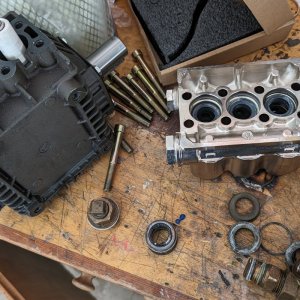Bill Bruders said:
Eric said:
Hi Bill,
To be NEC ® compliant the electrical unit can run at 80% of the breaker size. That means a 30amp breaker can run a maximum of 24amps. A 15amp breaker can run at a maximum of 12amps. The ELE 6400 uses 11.67amps/circuite. NEC ® compliant is minimum for a very basic electric code. You will need 2 circuits in most cases using the ELE 6400 and that will give you about a 50 degree temperature rise. This is all I need unless the temperature in the house is very low. I work in the mountains of Colorado and have seen temps requiring a 3rd circuit, Once. The most important issues when using heat is getting the heat UP. The ELE 6400 does not have high cfm. That is the one reason you can get higher temperatures. You use air movers to distribute the heat in the drying area and a downdraft fan the bring the heat back down to the flooring and back out to the walls The TES uses higher cfm (air mover) and that cools the heated air down. This isn’t rocket science, higher heat will dry faster. I usually dry at 115 –120 degrees using the ELE 6400. All I can say is I have used the eTes and the ELE 6400. The ELE 6400 way outperforms the eTes period. That is real field experience.
Eric
http://www.colortechrestoration.com
Heat Drying Equipment
http://www.driheat.com
Eric
I have a very solid understanding of NEC compliance as well as UL, CSA CUL and ETL. I'd suggest you foucus more on the features of your product as it relates to drying than draw safety comparisons to other manufactureres products since you may find you do meet all the requirements either :wink: Also couldn't you have chosen a slightly diferent name than to play on the Dri-Eaz name?
I must say it doesn't sound like you not do real heat drying. No one has said anything about temperatures. That is the most important factor when heat drying. I have ducted the ELE 6400 into a air mover for a tough wall. Because of the high cfm the air was warm, not hot. The ELE 6400 is for heat drying. The eTes is designed for hard to dry areas, anyway that is what Tes says. Quote from Tes web site, “Almost every water loss has trouble spots that take longer than the expected three days to dry. Trouble spots like double wall sheetrock, PVC wallpaper, plaster walls, hardwood floors, cabinets, sill plates, crawl spaces, attics, etc”.
I do not float carpet I do top down drying. Using heat 95% of my dryouts are done in 2 days or less. Real heat drying will speed up your whole dryout, no just trouble areas. The 2 units don’t even compare, the ELE 6400 is a true heat drying system and the eTes is designed for hard to dry areas. One thing you guys be interested in it the ELE uses 120vac circuits and you can get up to 6400 watts, 21,837.71btus. The eTes 240 is 6200 watts, 21,155.28btus and the eTes 120 is 4000 watts, 13,648.57btus. Btus shown are based on manufactures advertise watts and converted to btus. The ELE 6400 is much more versatile because is requires 120vac, not 240vac like the eTes 240. Many homes I work in don’t even have 240vac and if they do they don’t want me plugging at the stove or dryer for such a little dryout. Just don’t make sense.
You need to do your homework, the ELE 6400 is manufactured by Energedry. I have nothing to do with what the manufacture names their equipment or how they market their equipment. I have no way to get third party verification because I am not the manufacture. Talk to the manufacture. All I know is the ELE 6400 way outperforms the eTes period. That is real field experience, my experience.
Eric
http://www.colortechrestoration.com

